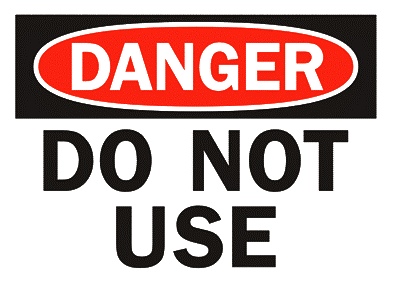Information
-
Document No.
-
Unit
-
Location
-
Rank/Name of Unit OC
-
Telephone Number
-
Date of Register Creation (Register must be retained for 7 years)
-
Prepared by Rank/Name
-
Designation
-
Unit Responsibilities
1. Assign a serial number for every piece of electrical equipment in your workplace. This includes portable equipment, hand-held equipment and stationary equipment, designed for connection to low voltage supply by a supply cord. This also includes cord sets, cord extension sets and electrical portable outlet devices, i.e. power boards, and residual current devices, i.e. safety switches.
2. Provide a basic description of the equipment / appliance / tool, as well as its location. For example, “Philips Steam Iron,” “Orderly Room, White Cabinet”.
3. New equipment does not need to be inspected or tested within 12 months of purchase, as the supplier is deemed responsible for the initial electrical safety of the new item. However, the responsible person shall ensure that the equipment is tested and tagged during the next testing schedule for their area.
4. Electrical appliances bought in by contractors or from home for use in an AAC workplace are subject to the same testing and tagging procedure for appliances owned or leased by the AAC. Appliances should be tested and tagged prior to their use in AAC workplaces.
Electrical Integrity Testing – Competent Person Responsibilities
1. Equipment that has been assessed as being used in a hostile operating environment must be inspected and tested in accordance with AS/NZS 3760 In-service safety inspection and testing of electrical equipment and the test results recorded in this register. Equipment that has been assessed as being used in a non-hostile operating environment does not require inspection and testing but must be maintained in a safe operating condition (in accordance with the Work Health and Safety Act 2011). You should review this risk assessment and inspection record if there is a change in equipment use / location or if an electrical incident occurs. A hostile operating environment means where electrical equipment in its normal use is subject to operating conditions that is likely to result in damage to the equipment or the compromising of insulation or of other protective measures. Examples include exposure to moisture, heat, vibration, corrosive substances or dust that is likely to result in damage to the equipment.
2. Damaged of faulty equipment must be taken out of service and repaired by a competent person or replaced.
- Electrical Equipment
-
Equipment Description
-
Location
-
Risk Assessment: Is Electrical Integrity Testing Required?
-
Date of Test
-
Visual Test Result
-
The appliance has failed an electrical safety inspection. The appliance is to be tagged out. This tag may only be removed by an authorised person after repair.
-
Electrical Integrity Test Result
-
The appliance has failed an electrical safety inspection. The appliance is to be tagged out. This tag may only be removed by an authorised person after repair.
-
Electrical Tag No
-
Date of Retest
-
Remarks
















